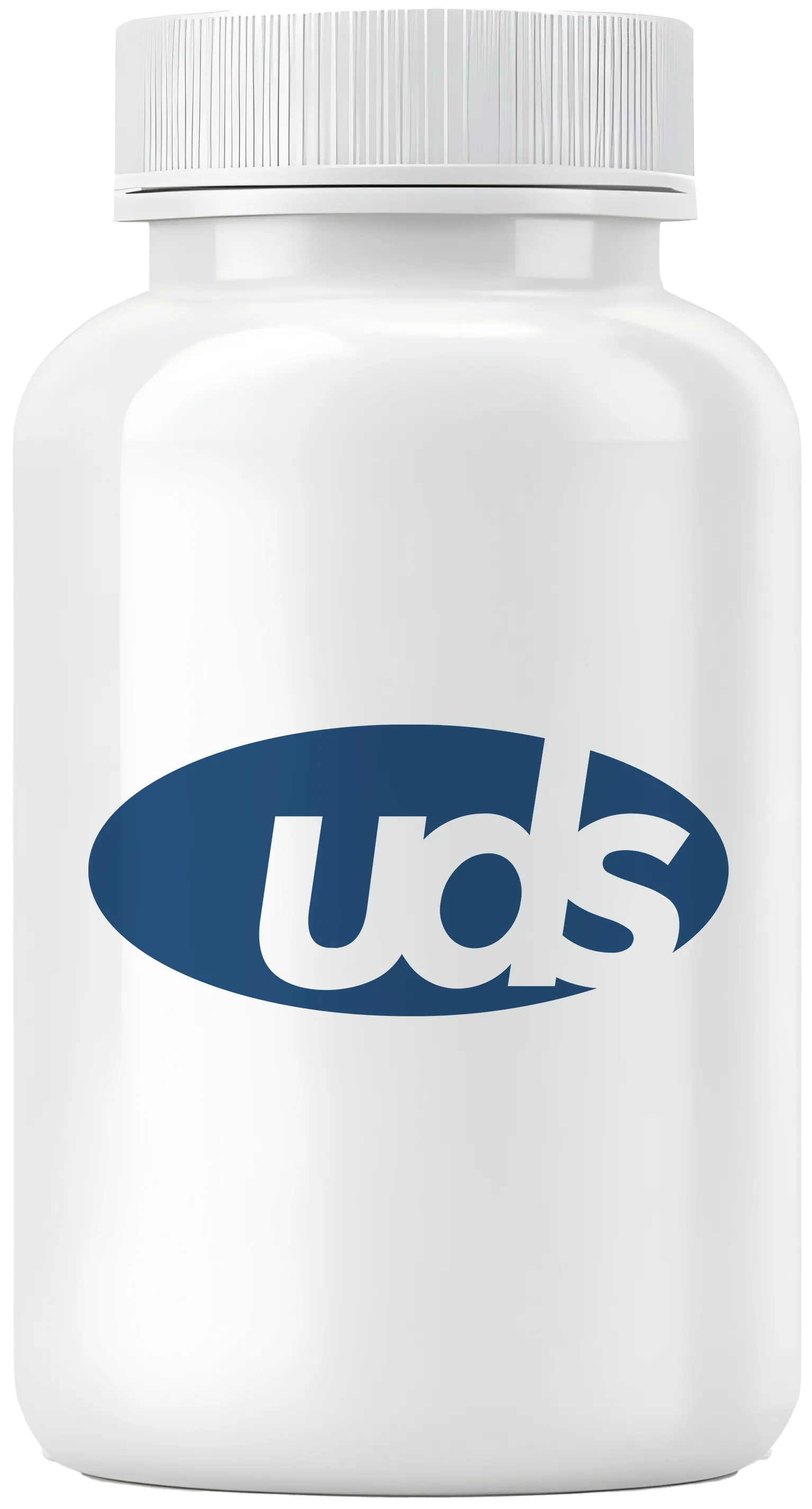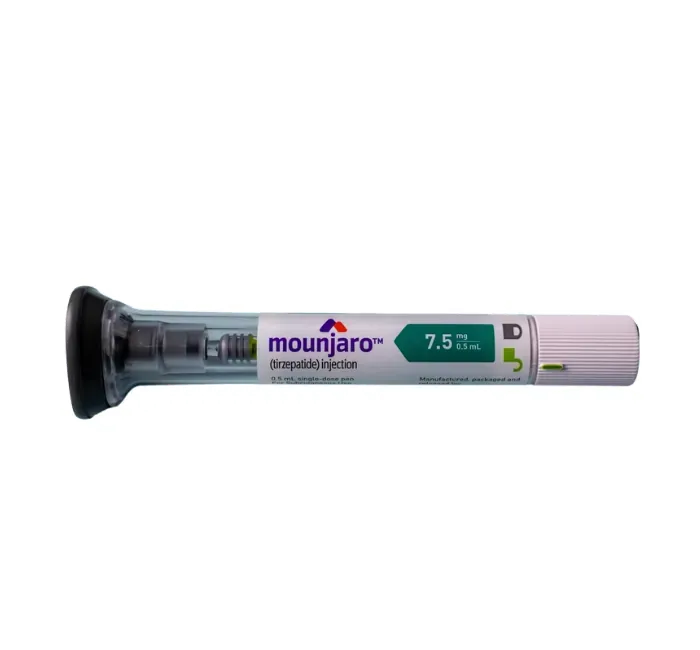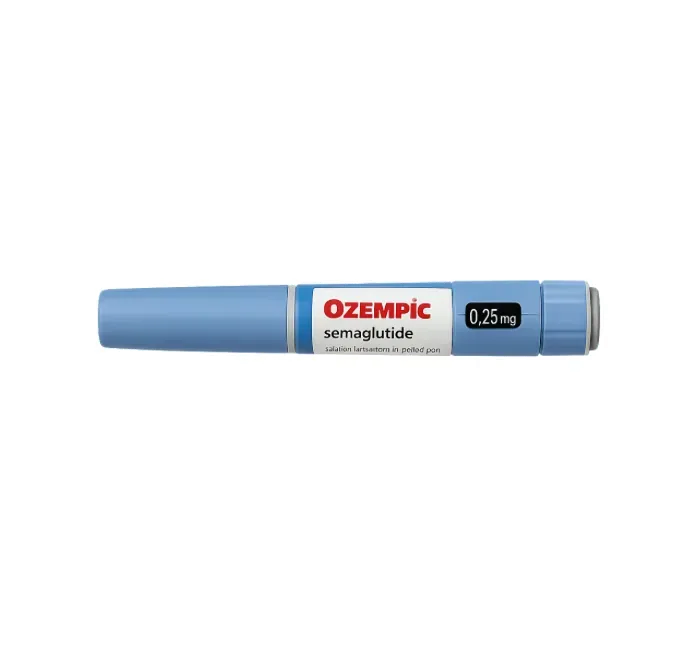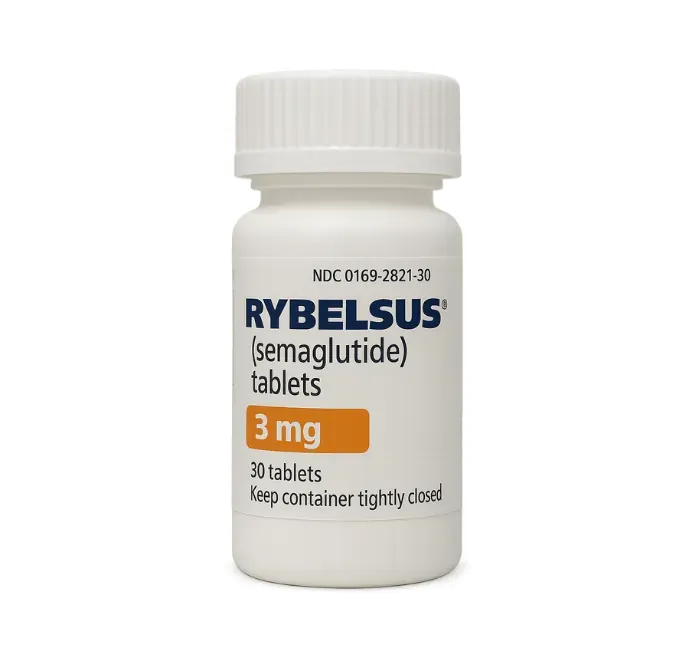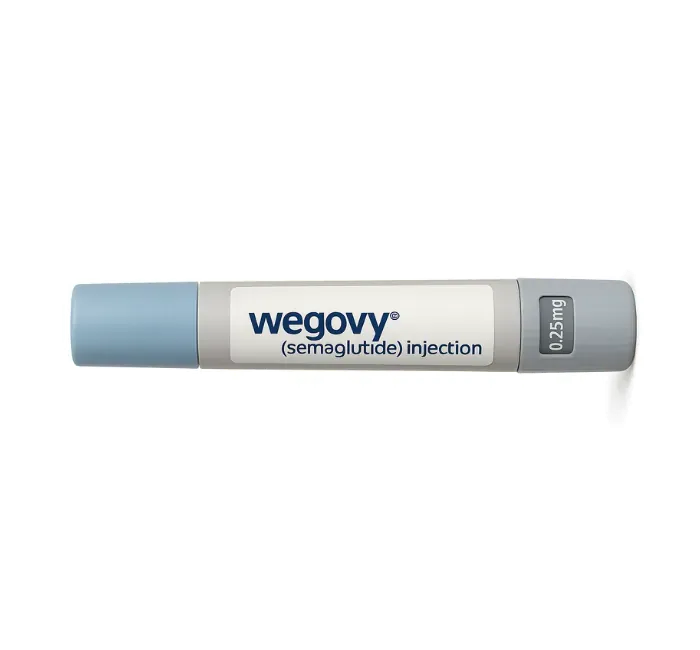What is Semaglutide Generic For?
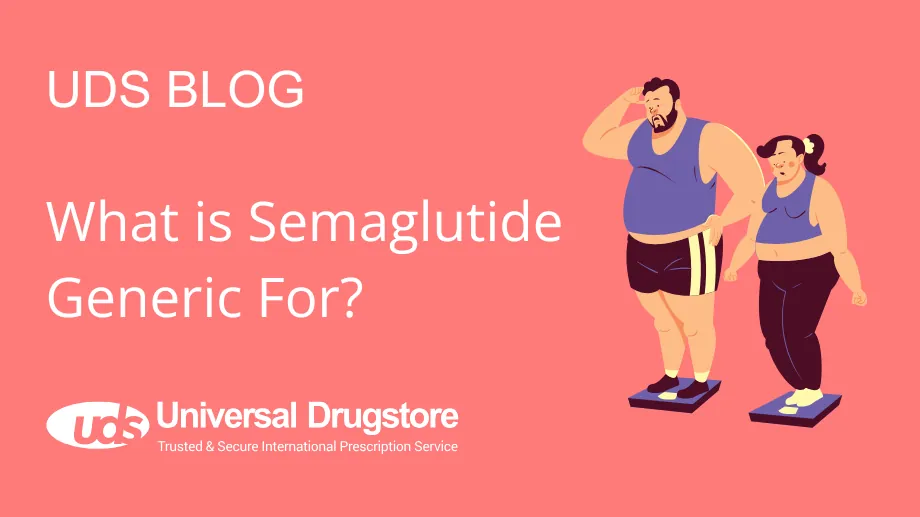
Key Takeaways
- Semaglutide is the generic name for several brand-name drugs, including Ozempic, Wegovy, and Rybelsus.
- No FDA-approved generic versions of semaglutide currently exist on the market.
- Each semaglutide brand has different formulations, dosages, and approved uses despite containing the same active ingredient.
- Ozempic treats type 2 diabetes and reduces cardiovascular risks, Wegovy is for weight management, and Rybelsus is an oral diabetes medication that also reduces cardiovascular risks.
- All semaglutide brands are manufactured by Novo Nordisk and work as GLP-1 receptor agonists.
Many people search for cheaper, generic alternatives to expensive brand-name drugs like Ozempic or Wegovy. You may see the name semaglutide online and think that it is the generic version of these medications. While semaglutide is the generic name and active ingredient of these meds, there is no generic version of any of them.
Read on to learn all about these GLP-1 drugs and when a generic version may be available.
Understanding Semaglutide: Generic Name vs Generic Medication
The confusion around semaglutide often stems from misunderstanding the difference between a generic name and a generic medication. Semaglutide belongs to a class of drugs called glucagon-like peptide 1 (GLP-1) receptor agonists, and “semaglutide” is simply the scientific name for this specific compound.
A generic prescription medicine, on the other hand, would be an FDA-approved version of semaglutide produced by a different manufacturer once patent protections expire. Currently, all semaglutide formulations remain under patent protection by Novo Nordisk, with expiration dates anticipated as early as 2026 in Canada for Ozempic.
Semaglutide Brand Names and Their Uses
All FDA-approved semaglutide brands contain the same active ingredient but differ in their formulations, dosing, and approved medical conditions.
Ozempic
Ozempic was the first semaglutide formulation to receive FDA approval in 2017. This weekly semaglutide injection is primarily used in adults with type 2 diabetes to improve blood sugar control, alongside diet and exercise. The medication helps lower blood sugar levels by increasing insulin secretion when blood glucose is elevated.
Ozempic is also approved to reduce the risk of major adverse cardiovascular events, including cardiovascular death, heart attack, and stroke, in adults with type 2 diabetes and known cardiovascular disease. Recent approvals have expanded its use for patients with chronic kidney disease, helping to slow kidney function decline and reduce the risk of kidney failure.
The subcutaneous semaglutide injection comes in pre-filled pens with different dosage strengths, allowing healthcare providers to follow a dose escalation schedule that starts low and gradually increases to minimize side effects.
Wegovy for Weight Loss
Wegovy received FDA approval in 2021. This drug, approved for chronic weight management, is prescribed for adults and adolescents aged 12 and older with obesity (BMI ≥30) or overweight (BMI ≥27) with at least one weight-related health condition.
Clinical trials have shown that Wegovy can help patients lose weight significantly. This typically equals around 15% of their body weight when combined with a reduced-calorie diet and regular exercise.
In 2023, Wegovy also received approval for cardiovascular risk reduction in adults with obesity or overweight who have established cardiovascular disease but do not have diabetes. The higher dosage strength of Wegovy compared to Ozempic makes it more effective for long-term weight management.
Rybelsus
Rybelsus made history in 2019 as the first oral GLP-1 receptor agonist to receive FDA approval. This daily oral medication provides an alternative for patients who prefer not to use injectable semaglutide formulations.
Like Ozempic, Rybelsus is primarily indicated for type 2 diabetes management and has also been approved for cardiovascular risk reduction. The oral administration requires special instructions. Patients must take it on an empty stomach with only water, waiting at least 30 minutes before eating or drinking anything else, including fruit juice.
The tablet comes in different strengths, and patients typically start at a low dose and increase it over time. While convenient for those who don’t like injections, the absorption of oral semaglutide is generally lower than injectable forms.
How Semaglutide Works Across All Formulations
Regardless of the brand name or formulation, all semaglutide products work the same way. It mimics the action of a natural hormone called GLP-1, which is produced in the intestines after eating.
When semaglutide binds to GLP-1 receptors, it triggers several things. In the pancreas, it stimulates insulin release when blood sugar levels are high, helping to lower blood sugar levels naturally. At the same time, it blocks glucagon secretion, which prevents the liver from producing excess glucose.
Semaglutide also slows gastric emptying, meaning food stays in the stomach longer. This leads to increased feelings of fullness and reduced food intake. The delayed stomach emptying contributes to both weight loss and better blood sugar control by preventing rapid spikes in blood glucose after meals.
In the brain, semaglutide affects appetite control centers, reducing cravings and helping patients maintain long-term weight loss. These combined mechanisms explain why semaglutide is effective for both diabetes management and weight loss, regardless of whether patients use Ozempic, Wegovy, or Rybelsus.
Shop Medications
The cardiovascular and kidney protection mechanism appears to work through multiple pathways, including improved blood sugar control, weight loss, blood pressure reduction, and potentially direct protective effects on blood vessels and kidney tissue.
Side Effects Common to All Semaglutide Formulations
Because they contain the same active ingredient, they share similar side effect profiles. However, the severity and frequency may vary based on the dose and individual patient factors.
The most common adverse events are gastrointestinal, including nausea, vomiting, diarrhea, constipation, and abdominal pain or stomach pain. These effects are typically worse when starting treatment or increasing doses. This is why a gradual dose escalation schedule is recommended.
For injectable formulations like Ozempic and Wegovy, injection site reactions can occur, whether administered in the upper arm, thigh, or abdomen. Patients should rotate injection sites to minimize these local adverse effects.
More serious but rare side effects require immediate medical attention. The FDA has issued warnings about potential thyroid C-cell tumors, including medullary thyroid carcinoma (MTC). Patients with a personal or family history of thyroid cancer or multiple endocrine neoplasia syndrome should not use semaglutide products.
Other serious adverse events can include severe nausea and vomiting leading to dehydration, acute kidney injury, particularly in patients with existing kidney disease, and diabetic retinopathy complications in some patients with diabetes. Signs of kidney problems include unusual tiredness, decreased urination, or swelling.
Severe pain in the abdomen or stomach cramps could indicate pancreatitis, a rare but serious condition requiring immediate medical attention. Additionally, allergic reactions, though uncommon, can occur. If you experience trouble swallowing, breathing difficulties, or skin reactions, get help immediately.
Future of Generic Semaglutide
The patent protection for most semaglutide formulations will begin expiring in the early 2030s in the United States. However, major generic drug manufacturers are planning to launch generic semaglutide in Canada as early as next year. This would follow regulatory approval from Health Canada.
When generic versions do become available, they will need to demonstrate bioequivalence to the original brand-name products through clinical trials. For injectable formulations, this can be complex because manufacturers must prove their products work identically to the original subcutaneous semaglutide formulations.
Once generic semaglutide becomes available, patients can expect significant cost savings. Generic medications typically cost drastically less than their brand-name counterparts, which could help patients currently struggling with insurance coverage or high out-of-pocket costs.
Patients should be aware that compounded semaglutide products currently available are not the same as future FDA-approved generics. These compounded versions may not meet the same safety and efficacy standards. The FDA has issued warnings about potential risks associated with these unregulated alternatives.
Current research continues into new GLP-1 receptor agonist formulations, including longer-acting versions and combination therapies. These developments may provide additional options even after generic semaglutide becomes available.
FAQ
Is there a generic version of Ozempic or Wegovy available right now?
No, there are currently no FDA-approved generic versions of any semaglutide products available in the United States or other major markets. All semaglutide formulations (Ozempic, Wegovy, and Rybelsus) remain under patent protection by Novo Nordisk until the early 2030s. However, the patent for these products expires in 2026 in Canada, so you may be able to get them as early as next year.
Can I switch between different semaglutide brands like Ozempic and Wegovy?
Switching between semaglutide brands should only be done under medical supervision from a licensed health care provider. While they contain the same active ingredient, the different brands have different strengths, doses, and are approved for different conditions. Your doctor will need to adjust your dose appropriately and monitor for any adverse effects during the transition. Never switch medications or stop taking them without talking to your doctor first.
Why do Ozempic, Wegovy, and Rybelsus have different costs if they contain the same drug?
Even though these medications share the same active ingredient, they have different formulations, manufacturing processes, and approved indications, which affect pricing. Insurance coverage also varies significantly between brands. Many insurance plans cover Ozempic for diabetes, but may not cover Wegovy for weight loss. The different dosage forms (oral vs. injectable) and strengths also impact manufacturing costs and pricing structures.
Are compounded semaglutide products the same as generic semaglutide?
No, compounded semaglutide products are not the same as FDA-approved generic medications. Compounded versions are created by specialized pharmacies but don’t undergo the same rigorous testing and quality control as other drugs that are FDA-approved. The FDA has issued warnings about safety concerns with compounded semaglutide, including potential contamination and incorrect dosing. Always obtain semaglutide from a licensed pharmacy with a valid prescription.
What should I do if I miss a dose of my semaglutide medication?
If you miss a dose of injectable semaglutide (Ozempic or Wegovy), take it as soon as you remember if it’s within 5 days of your missed dose. If more than 5 days have passed, skip the missed dose and take your next scheduled dose on your regular day.
For Rybelsus (oral), if you miss a dose, skip it and take your next scheduled dose the following day. Never double up on doses, and contact your healthcare provider if you frequently miss doses, as this can affect the medication’s effectiveness.
Sources
- Rybelsus (semaglutide) tablets, for oral use [package insert]. Novo Nordisk. Last updated 10/2025. Accessed Nov. 6, 2025.
- Ozempic (semaglutide) injection, for subcutaneous use [package insert]. Novo Nordisk. Last updated 10/2025. Accessed Nov. 6, 2025.
- Wegovy (semaglutide) injection, for subcutaneous use [package insert]. Novo Nordisk. Last updated 10/2025. Accessed Nov. 6, 2025.
- Canadians could get more affordable version of Ozempic in early 2026. Here’s how. CBC. Accessed Nov. 6, 2025.
